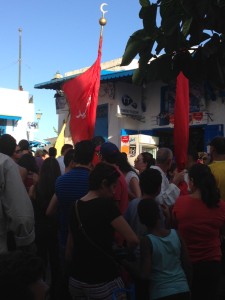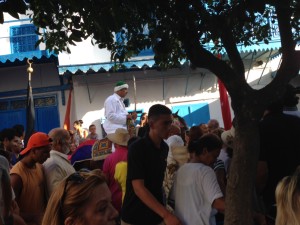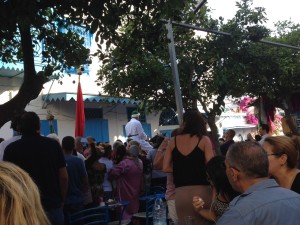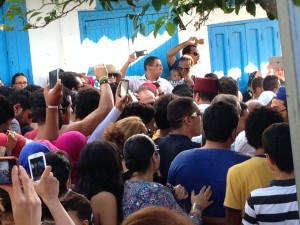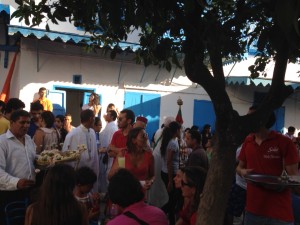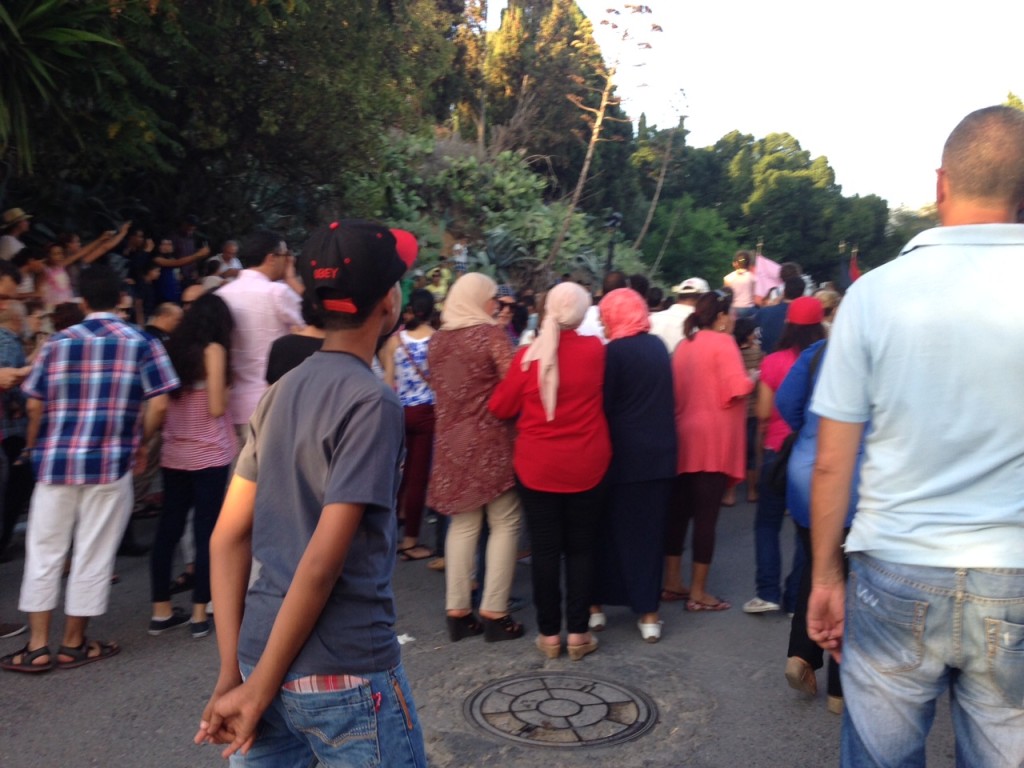In Sidi Bou Said, Tunisia bares its Sufi soul & anxiety about ISIL’s imprint
If there can be any measure of Tunisia’s anxiety about the extremist imprint, it came at Sidi Bou Said’s celebration of itself. Last Sunday, the beautiful blue and white village in the Tunisian capital bared its Sufi soul.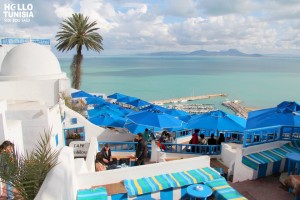
Two Sufi groups gathered to sing to praise God, love and life.
“Do you understand what you’re watching?” an older lady stopped and asked us.
We nodded but she continued with urgent emphasis: “This is not Daesh, you know that I hope?”
We were taken aback by her reference to the Arabic acronym for ISIL. And her need to assure us that all Tunisians were not persuaded by the extremist group’s brutal agenda.
She has reason:
- More Tunisians are known to be fighting with ISIL than any other nationality.
- In late June, right after the Sousse attack, a group warned westerners against visiting Tunisia. It originally called itself Ajnad Al Khilafa de Kairouan, identifying itself as the media arm of Ansar Al Sharia in Tunisia, an umbrella grouping of hardline Islamists. Kairouan is the holiest city in Tunisia.
- Later, the group called itself Ajnad Al Khilafa bi Ifriqiyah, suggesting it covered the original Roman province of that name which included modern-day Tunisia and parts of Libya and Algeria. It seemed to point to the evolution of another so-called mini-Islamic ‘state’, ideologically allied to ISIL.
But on that Sunday afternoon, there was no brooding threat of extremist exclusivism. The ecstatic parade started outside the 13th century shrine of Sidi Bou Said, the holy man from whom the village takes its name. It began with horses, flags and poles topped with emblems.
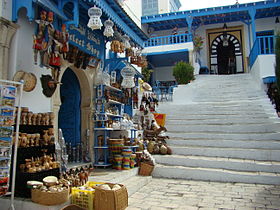 Sidi Bou Said was a favourite with tourists (in the days when they flocked to Tunis) and it has famously been said that it is so beautiful that sometimes it seems painted on, not quite real.
Sidi Bou Said was a favourite with tourists (in the days when they flocked to Tunis) and it has famously been said that it is so beautiful that sometimes it seems painted on, not quite real.
Sufi-ism, however, is the essence of Sidi Bou Said. Some scenes from the Sufi celebration:

